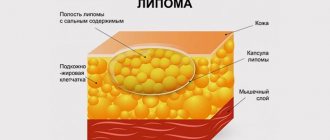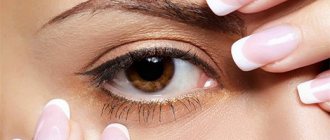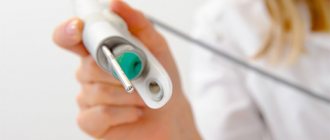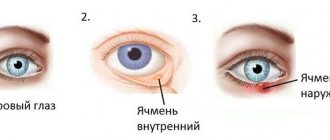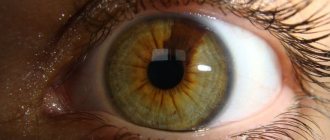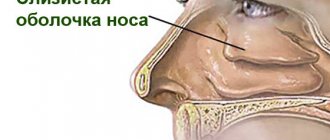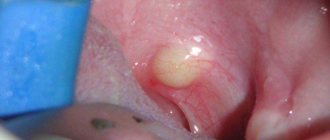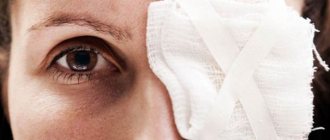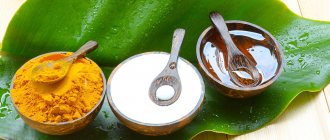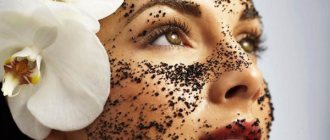Causes
The specific cause of whiteheads is unknown to modern medicine. Relatively recently, millet grass was considered one of the types of wen that occurs as a result of the accumulation of fatty secretions in the pores of the skin. However, such a description is more typical for acne or a closed comedon.
Milia are small cystic formations that have a capsular wall filled with keratinized epithelium (layered keratin accumulations).
Unlike ordinary acne, milia are located separately from the ducts, hair follicles, sebaceous and sweat glands. Such whiteheads rise somewhat above the skin, and their size ranges from 0.5 to 5 millimeters.
Attempts to squeeze out the resulting millet are in vain due to the fact that the skin capsule contains only a minimal amount of fatty deposits mixed into the total keratin mass.
Sometimes, when piercing the milia, a little content may be released, but such measures will not help get rid of the cystic formation completely. In addition, by injuring the skin, you can introduce an infection underneath it.
One of the causes of millet lesions is considered to be hyperkeratosis, a skin pathology characterized by a disruption of the normal rate of division of horny skin cells when the desquamation process slows down. As a result, keratin deposits accumulate in the subcutaneous layers.
Other reasons for the appearance of such acne under the skin on the face are:
- hereditary predisposition to whiteheads;
- hormonal imbalances characteristic of puberty and menopause;
- diseases of the thyroid, pancreas, and reproductive system;
- impaired metabolism in the body;
- poor nutrition;
- diseases of the digestive tract, leading to an imbalance of vitamins in the body;
- incorrect choice of caring or decorative cosmetics;
- excessive amount of solar radiation.
Whiteheads can also appear under the skin on the face during pregnancy or lactation. This happens due to the fact that a pregnant woman’s body undergoes hormonal adjustments to bear a child.
Hormonal imbalance, which is an incredible stress for the body, leads to the appearance of milia.
Pimple on the eyelid
Chalazion is an inflammatory disease in which the ducts of the meibomian glands become blocked and secretions accumulate in the thickness of the eyelid. Sometimes a chalazion is called a hailstone. This disease looks very similar to barley, but in reality they are completely different. So, for example, with a chalazion, the compaction has nothing to do with the skin, but with barley, it’s the opposite.
The main function of the meibomian glands is the production of a special fatty secretion, which is part of tears. This secretion performs a protective function; it lubricates the mucous membrane of the eye, protecting it from drying out. When the ducts of the meibomian gland are blocked, the secretion continues to be released and accumulates in the gland. This is how a compaction forms, which gradually increases.
Drug treatment of milia
Follicular cysts, which are milia, can be present on the face for a long time without changing. These rashes do not cause much discomfort, but still represent a cosmetic defect. Such a deficiency as millet becomes a problem for any woman who carefully monitors the condition of her face.
The difficulty is that getting rid of cystic formations is not as easy as acne or regular pimples. It is almost impossible to squeeze out milia at home; in addition, if you try to squeeze out the millet, there is a high probability of getting an infection under the skin. Subcutaneous infections can lead to inflammation and the formation of non-healing wounds.
Before starting treatment for milia, it is strongly recommended to visit a dermatologist, who will not only establish an accurate diagnosis, but also help develop the optimal treatment strategy. First of all, the specialist will advise you to establish the exact cause of the disease, since only by eliminating it is the most effective treatment possible.
After an oral interview with the patient and a full examination, the doctor will suggest three ways to get rid of milia:
- Curettage (mechanical action) – used in the presence of a small number of rashes. Using a special instrument (curette), the cyst is punctured and its contents are removed along with the subcutaneous capsule. In case of incomplete removal of the capsule, there is a high probability of re-formation of milia.
- Electrocoagulation is one of the methods of electrosurgery, which is the destruction of a cystic formation by cauterizing it with an electric current. The procedure is carried out using a special instrument that conducts high-frequency electric current. This manipulation allows you to quickly and without causing discomfort to the patient to remove milia located deep in the layers of the epidermis.
- Laser removal is a method that experts recommend using when there is a large accumulation of milia in one area of the skin, as well as when they are difficult to access (for example, on the eyelids or mucous membrane). To remove cystic formations from the skin of the face and body, a carbon dioxide laser is used, which does not have a thermal or mechanical effect on the epithelium. Laser removal of milia is not accompanied by bleeding and has a good cosmetic result.
Medicinal methods of treating millet sometimes include the use of cosmetic exfoliating agents based on salicylic acid, urea or retinoids for external use.
However, such drugs have little effect, and often serve only as a preparatory stage for medical procedures.
Read how to deal with acne on your body. If you have juvenile acne with pustules, about effective treatment. More details here.
Chalazion symptoms
What symptoms can you tell you have a chalazion?
- externally, the chalazion looks like a pea;
- in the early stages, redness and slight swelling are possible;
- the chalazion is not fused to the skin, that is, the skin over the formation is mobile;
- there is no pain during palpation;
- Over time, a kind of capsule may form, the chalazion will increase in size, but redness will not be observed at this stage.
A chalazion can appear on both the upper and lower eyelids. There are no age restrictions for this disease. This seal occurs more often on the upper eyelid, as there are more glands there.
How to cure whiteheads under the skin on the face with folk remedies
If, due to some circumstances, patients for whom the presence of grass causes discomfort cannot seek help from a dermatologist, attempts can be made to independently treat milia at home.
It is worth noting that this method of treatment is undesirable and can lead to disastrous consequences.
First of all, the methods of home treatment of millet include piercing. Such treatment of milia by piercing is allowed only if the cystic formation has appeared quite recently and has not yet acquired the characteristic shape and white tint of the head.
When piercing at home, you must follow some rules that will minimize the risk of infection getting into the resulting wound.
Before performing the piercing procedure at home, it is recommended to thoroughly steam the area of skin affected by milia. For such a steam bath, they usually take a herbal mixture of calendula, valerian, sage and chamomile in equal proportions, add a liter of heated water and boil for 20-25 minutes. The duration of the steam bath is 5 minutes.
After the steam bath, you can start piercing the millet:
- wipe your face dry;
- lubricate the affected area of skin with tonic;
- take a thin sterilized needle and carefully puncture the acne head;
- With clean fingers wrapped in a napkin, squeeze out the contents of the cystic capsule, pressing downwards;
- treat the extrusion site with iodine or an alcohol solution;
- If it was not possible to remove the capsule completely, it is recommended to repeat this procedure a few days later.
Some homemade masks also have a good effect in the fight against milia.
Thus, a mask prepared with badyagi has an exfoliating effect and helps get rid of shallow spots quickly enough. To prepare an exfoliating mask from badyagi you will need:
- pharmaceutical badyagi powder (powder from dried sea sponges);
- hydrogen peroxide (3%);
- mask container;
- cotton pads;
- peroxide tray.
Badyagi powder must be thoroughly mixed with peroxide and applied to the face in an even layer, avoiding the area around the eyes. After the mask begins to dry out, you need to soak an important disk in peroxide and remove it from your face. Then you need to reapply the badyagi mask to your face and repeat the procedure for 20 minutes.
A decoction of calendula and chamomile has a disinfecting effect. To prepare this remedy, you need to mix 1 teaspoon of herbs, pour a glass of boiling water and let it brew for about 40 minutes. The decoction is applied to the skin for 20 minutes.
However, it is worth remembering that treatment of milia at home is carried out as an additional measure, and not the main measure. For the most effective removal of millet from the skin of the face, it is recommended to consult a doctor.
What types of neoplasms are there?
One of the formations most often appears in the eye area:
- Barley. The formation develops when a hair follicle becomes infected and usually forms on the upper or lower eyelid. The appearance of a pimple with a dense structure is accompanied by swelling and redness of nearby areas of the skin. Reduced immunity, incorrect and untimely treatment can lead to the formation of purulent abscesses, which are treated surgically.
- Chalazion. A dense round nodular formation. It develops when the excretory ducts of the sebaceous gland are blocked by sebum and accumulate under the skin. The tubercles formed during chalazion are not painful, so patients are in no hurry to treat it.
This disease is characterized by an enlargement of the tubercle, which does not look aesthetically pleasing. Chalazion can occur both as an independent disease and as a complication of certain diseases, for example, barley. Barley and chalazion are often confused due to their external similarity.
- Pinguecula. A small growth that forms directly on the white of the eyeball. The reason for the appearance of such a formation may be irritation of the eye from sunlight, dust or other external influences. Education does not impair visual function.
- Xanthelasma. A small flattened yellow formation forms under the eye or in the upper eyelid area. The rashes can be single or multiple, gradually increasing in size. The main factors provoking the formation of xanthelasmas are liver diseases, lipid metabolism disorders, and increased cholesterol levels in the body.
So, if a pimple appears on the eyelid, what does it mean, what could it be? What disease can manifest itself in this way? Depending on the nature of the bubble and its location, a specific disease can be assumed. For correct diagnosis, it is recommended to consult a specialist.
Photos before and after
How to remove wen at home
If small white bumps appear on your face, there are a number of recipes that will help you forget about this trouble. These are special compresses based on medicinal herbs and other useful components that have a resolving effect.
You should take an aloe leaf, wash it and cut it so that the pulp is visible and the juice is released. The plant is carefully applied to the wen and fixed with adhesive tape. This compress can be kept for any time.
These manipulations are recommended for twenty days. Do them twice a day.
An application of honey and salt also helps. They are taken in equal quantities. This composition is kept for half an hour and then washed off. The course lasts 14 days.
A compress of vodka and olive oil also helps.
Prevention measures
After removing milia and eliminating the causes of their appearance, it is necessary to begin preventing the occurrence of new cystic formations on the skin of the face.
External preventive measures include:
- thorough and regular cleansing of facial skin from impurities and decorative cosmetics with special care products;
- carrying out gentle cleansing of the face using scrubs (approximately every two to three days it is necessary to exfoliate dead skin particles);
- regular moisturizing of the facial skin with specialized products and creams;
- refusal of cosmetics, the main components of which are oils;
- it is necessary to carefully monitor the cleanliness of bed linen and towels and change them at least once a week (a large number of bacteria accumulate on bed linen);
- To prevent the formation of rashes, wipe the inflamed area of skin with lemon juice or a solution of apple cider vinegar, and spot-on application of tea tree essential oil.
See how to get rid of blackheads on your face. What to do if blackheads appear in the ears? Find out further.
How to get rid of whiteheads on nose?
The answer is here. The best prevention against the recurrence of whiteheads on the skin of the face is to maintain a healthy lifestyle: proper nutrition, reducing excess sun exposure, and careful facial skin care. If milia form again, only timely contact with a specialist will help.
How to remove wen professionally
Clogged pores, white bumps are best cleaned and removed from the skin in the early stages. As a result, you will be able to prevent possible inflammatory processes. There are certain methods in medicine that can effectively combat this problem.
A common method is electrocoagulation. It uses high-quality electric current to gently cauterize the white bumps. The wounds that remain in their place heal quickly. This method is quite effective.
The laser is very effective. With the help of a beam, the inside of the lipoma is burned out, and at the same time the edges of the wound are cauterized. This method is also used for those areas of the face where the skin is most sensitive.
They often resort to the help of an endoscope. Cleaning is painless and quick.
Chemical injections are also carried out. The method allows you to avoid unwanted traces. This method takes the longest. The drug is injected under the wen with a syringe. It dissolves the tissue that makes up the tubercle.
If you are afraid to get rid of wen in such ways, you can try traditional methods.
What's inside the "grain"?
Each millet on the face is a cyst filled with keratin. They usually do not exceed 3 mm in diameter and often emerge from the hair follicle. Sometimes they are confused with closed comedones. But they do not appear on the eyelids and under the eyes. Comedones are easily squeezed out and produce a thick or hardened lump of subcutaneous sebaceous composition. Removing blemishes on the face is not so easy. Even if it is possible to squeeze out their semi-liquid contents, new “grains” will appear due to the resulting injury. However, millet grass can be easily diagnosed by eye without laboratory testing. Especially if you analyze the lifestyle of someone who wants to be cured of rashes, taking into account his chronic illnesses. So, the disease accompanying this skin defect is seborrhea.
